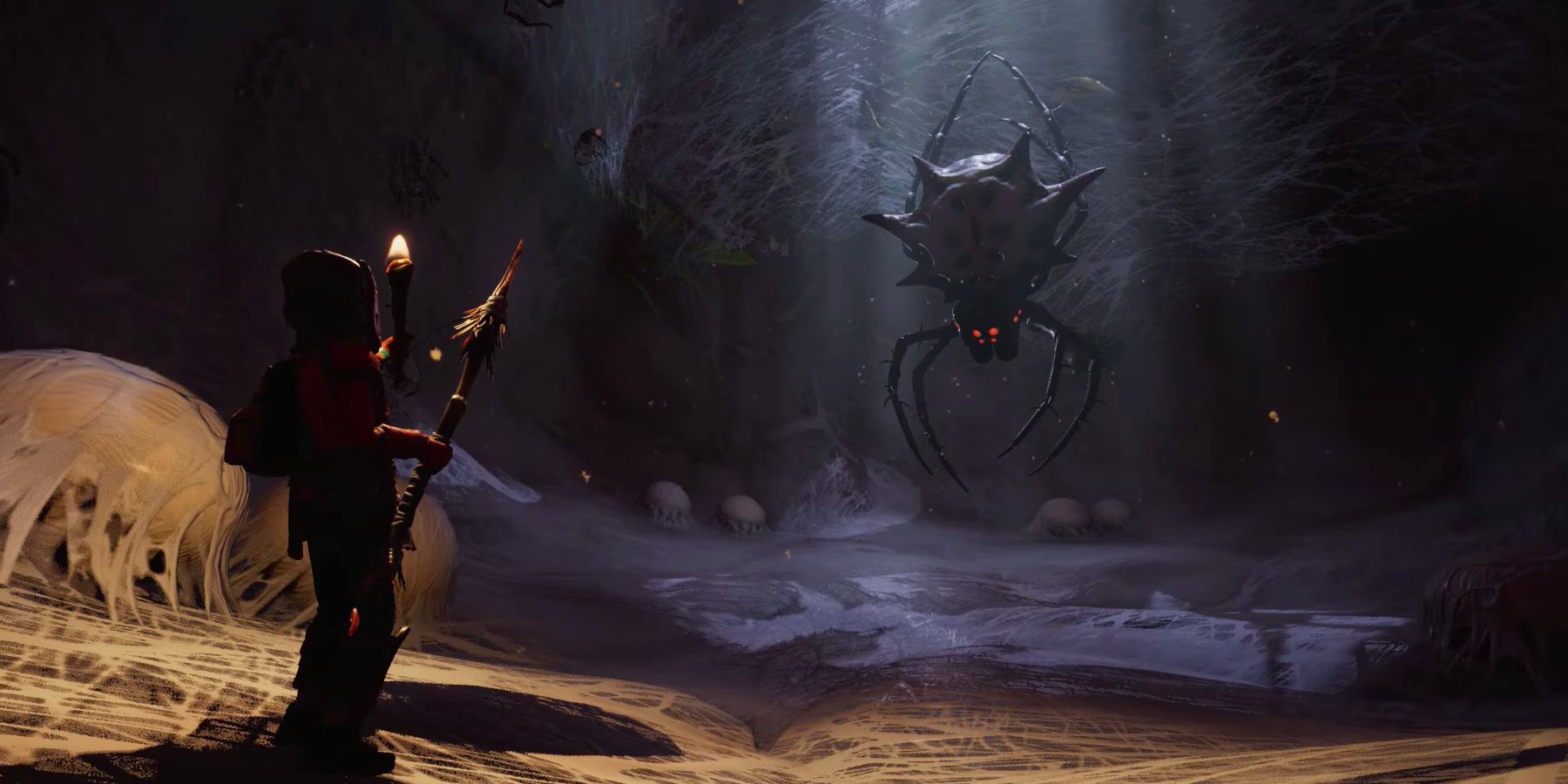Obsidian Entertainment's highly anticipated survival co-op Grounded has finally left early access, and it does not disappoint. Fans who have stuck with Grounded from the first days of early access will find that the game looks and feels significantly different, with a fuller, more fleshed-out, more vibrant world. In Grounded, players become one of four teenagers who have mysteriously shrunken down to smaller than the size of an ant. They must explore the backyard and face all its environmental perils to figure out what happened to make them small and how to return to human size and get back home.
Throughout the gameplay of Grounded, players will need to forage for materials and resources, craft armor, weapons, and other various items, build their base, explore giant landmarks of fairly mundane litter items like Juice Boxes or cookies, locate research labs, and, of course, fend off terrifying insects and arachnids. Players can choose to tackle these activities and this new world solo, or they can join a group of friends to make exploration, base building, resource gathering, and fighting that much easier. Grounded bears some similarities to other survival co-op games, like Subnautica, Rust, or Valheim, but also stands on its own thanks to its unique premise and gorgeous, stylized graphics.
The world of Grounded is beautiful and alive, making players feel like they really are bug-sized in a big backyard. The way various resources behave feels both natural and organically challenging. For example, players can find a few drops of juice or soda from some litter around the yard, or dew on the grass at night, both of which are clean sources of drinking water in Grounded, but it is not always a guarantee these will spawn. In addition, the sound design across the entirety of Grounded is fantastic. Each creature players encounter makes different noises, and this can help players not only determine what might be threatening them from behind some grass or roots, but also from which direction it's coming and how close it might be.
As was the case in Early Access, there is a bit of a learning curve when playing Grounded, and the game does not always spend time to carefully direct players. There is a great amount of freedom to explore and learn by trial and error, similar to a game like Valheim. Thankfully, Grounded makes it easy for players to customize their difficulty settings and find what provides the best balance of fun and challenge for every individual. Players can decide if their items break/need repair, if food can spoil, if bugs can spawn and if they ignore the character upon doing so, and even if they lose their items upon death.
In addition to the ability to customize difficulty, Grounded boasts some of the best general accessibility options in gaming. In early development, much focus was given to Grounded's Arachnophobia Safe mode, which allows players to adjust how spider-y some enemies appeared. Options included removing the legs, removing several of the eyes, or removing everything but a few massive orbs to signify a head and body. Beyond that, however, Grounded also offers other accessibility options, like a colorblind mode, wide interaction mode, the ability to adjust what items in the world get highlighted, and the option to have text read aloud, among others. Before ever starting a new game, the Accessibility menu opens, allowing and encouraging players to make their adjustments before starting their playthrough and eliminating the need to search various menus for these options.
Grounded still isn't without drawbacks, however. While the story and premise are both fairly strong and unique, Grounded's science lab mechanic is still the weakest and least believable part of the game. Much of the dialogue, especially with Grounded's robot NPC BURGL and audio logs of Dr. Tully, is overwritten, long-winded, and fails to land its humor. The Raw Science mechanic is decent, giving players a separate currency with which to unlock more upgrades and items, but it feels fairly tangential to the main draw of Grounded, which is undoubtedly the exploration of the unique, open world. Playing with friends in Grounded's co-op mode can still present some bugs (and not of the enemy insect variety), and even in single-player mode, it is very easy to get stuck on static plants and other environmental effects in the world. Finally, the grind can be more frustrating than it is in other survival games. Because the player character is so small and the various base-building tiles require quite a few of the larger resources, like weed stems or grass planks (which can only be carried and used in limited quantities), the act of completing a base in Grounded can get rather tedious.
The full release of Grounded is impressive due to its polish, attention to detail, and unique, compelling premise and world, but is still in need of some work to reach its full potential as a giant of the survival genre. It is staggering to see where Grounded started and how far it has come to reach version 1.0, and it is easy to get immersed in this familiar but new world. Grounded should, if nothing else, serve as the example for future game accessibility functions. Grounded is one of the more sophisticated and unique co-op survival games available today, and both veteran survival gamers and newcomers to the genre can find a lot to enjoy about its gameplay and style, especially if they've ever dreamed of exploring the world while the size of a bug.
Grounded is available now on Xbox Series X/S, Xbox One, and PC.


-the-Orchid-Mantis-in-Grounded.jpg)
